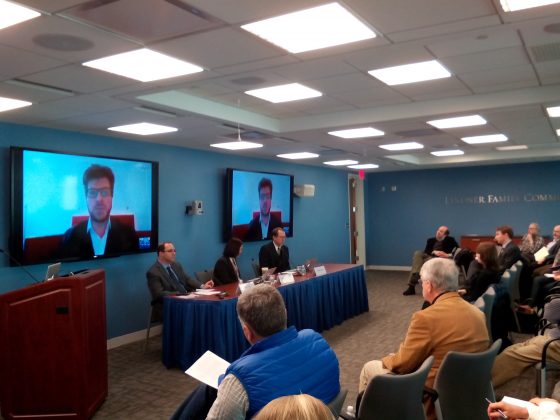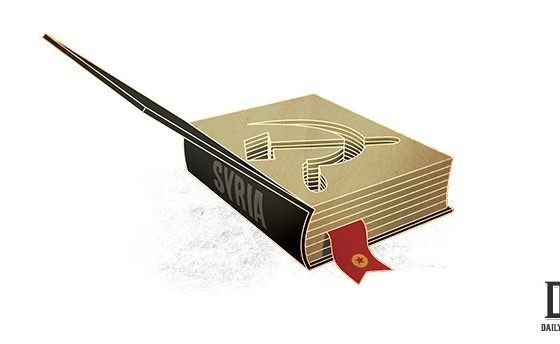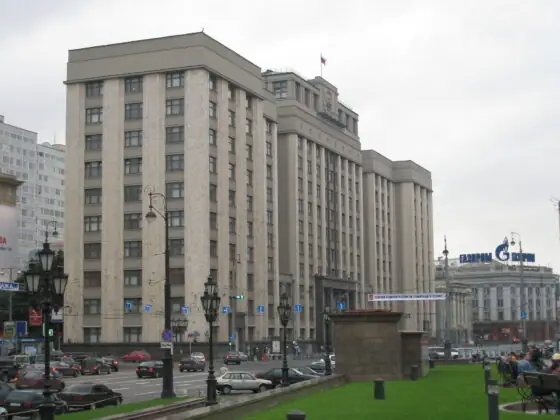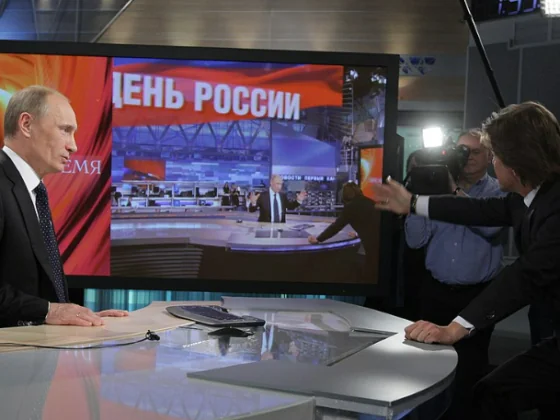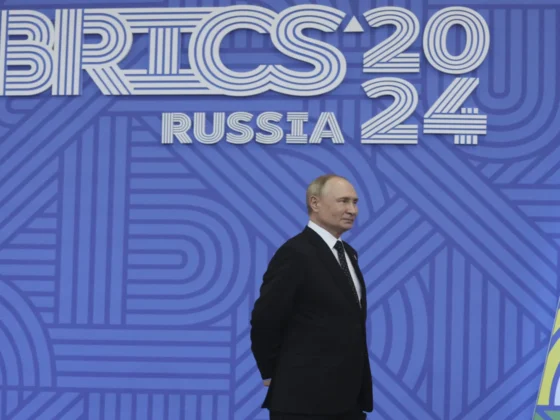(PONARS Eurasia Policy Memo) Recently, Russian policymakers and strategists have articulated a vision of a vibrant non-Western world, one in which the United States and European leaders are increasingly marginal and where Russia plays a leading role. In official statements, presidential speeches, and in presentations by government officials, Russian officialdom has presented the case that this non-Western world is vital and growing.[1] In official telling, the global market share of the United States and Europe is in decline, while the rising powers of Eurasia, India, and China are bearing with them an alternative economy, security and shared moral order that rejects the values of the current leadership in Europe and the United States. In some accounts, this non-Western world has an alternative set of conservative values, in many ways in keeping with the social and political norms of the 19th century: a time when the boundaries between men and women were clear, when great powers negotiated soberly with one another to sustain order within and between their states, when grand geopolitical bargains and spheres of influence were the substance of international diplomacy, and nationalism and the national interest were seen as legitimate grounds for changing borders and using military force.
This vision has largely been greeted with either derision or alarm in Western capitals, but it is important to assess its viability. Is there a viable Russian vision of an alternative to economic liberalism and a military-political world in which the US and Europe play a dominant role? And is there a non-Western world emerging in which Russia might play a leading role?
An Economic Non-West?
In the economic sphere, the short answer to these questions is “no,” or at least, “not yet.” There is no emergence of a non-Western economic alternative, in the way that Communism and planned economies presented an alternative to Western liberalism during the Cold War. It is true that the share of global GDP generated by the United States and Europe is declining and that of the BRICS—particularly China—is rising. But to grow, non-Western countries have had to emulate and incorporate what were once Western institutions, providing the equivalent of property rights, common standards of quality and production, and more transparent accounting in order to gain investment and trade. Growth has largely come—and continues to come—through ties of trade and investment with the United States and Europe. The growing sectors of the Chinese economy—for example, the parts that produce iPhones and other quality consumer goods for both domestic consumption and export—are those that have assimilated into this economic system. China and India are growing because for the past two decades they have economically become a part of “the West.”
To the extent that there is a non-West in the world economy, it is impoverished, sanctioned, natural-resource-based, or otherwise hamstrung or limited in its potential. It is not a club that is growing. Brazil, India, and China are increasingly lapsed members. Russia may increasingly be considered a member of this misfortunate club. At least in the economic realm, Russia is not leading. It is self-isolating.
Although sanctions and Russian military actions in Ukraine played a role in this isolation, the main damage has been done by the Russian state, which creates a business climate that risk-averse capital avoids. Russia, in contrast to much of Asia, has assimilated in a much more limited way to the norms and demands of the international economy. Property rights, particularly for foreign investors who do not enjoy the privilege of membership in elite political networks, are too tenuous to secure much investment. Russia continues to generate human capital, but much of it migrates to countries where it can enjoy the fruits of its innovation and effort without predation by a corrupt state. As a result, the economy is heavily dependent on the export of raw materials, particularly oil and gas, which have fewer institutional requirements to achieve growth. The Russian economy, as well as the federal budget, rises and falls with commodity prices. Russia’s core political-economic model—where control of assets is contingent on political loyalty and connections—necessarily limits its economic capacity and degree of integration.
The strategy of cultivating Russia’s place in the “non-West” appears to rest on a flawed underlying theory that economic ties are like military ties and alliances; that economic relations follow directly from intergovernmental agreements rather than being the product of the decisions of millions of individuals who need to be enticed into economic exchange. Where this is true—for example with nuclear energy or military production—Russian strategy is often successful in establishing ties. But state-to-state contracts or politically-driven contracts between state-controlled enterprises constitute a relatively limited share of international economic relations.
Expressions of solidarity of the “non-West”—in annual meetings of the BRICS, or the creation of the Asian Infrastructure Investment Bank—do not translate into trade and investment. Trade as a percentage of GDP is quite high among the BRICS, but much of that trade is with Europe and the United States. China’s largest trading partner is the United States, with $521 billion in total trade in 2013; Russia is tenth, with $89 billion in trade. The United States, with $61 billion in trade volume, is India’s third largest trade partner and the European Union as a whole has $82 billion in trade with India. Indo-Russian trade was a mere $10 billion in 2013, when Russia was India’s 18th largest trade partner.
The belief that intergovernmental agreements with China and investment from the countries of the non-West are going to compensate for the absence of financial and trade ties with Europe and the United States is already proving unrealistic. Despite a host of deals and public displays of affection between the leadership of the two countries, in the first half of 2015 trade between China and Russia fell by 31 percent, and Chinese investment to Russia dropped by 20 percent.
Now and into the future, it is unlikely that the Chinese investor will behave in a way quite different from the European or American; they will like to see returns. Chinese consumers are not going to show a preference for Russian products that are not competitive in price or quality. To gain access to markets in China, India, and the rest of Asia, Russia will have to implement most of the reforms that would be necessary to gain access to European and American markets. Its current political-economic model will not “pivot” well to a competitive Asia that has long since successfully pivoted toward “the West.”
A Non-Western Military Bloc?
Given its military capability and its vote on the UN Security Council, Russia is somewhat better situated to play a leadership role in security affairs. To the extent that wealth can be converted into military power, there is also an increase in the relative power of non-Western states. The military investment of China, Russia, Iran, and other non-Western powers has grown considerably in the past decade. Is it not possible for Russia to lead a bloc of emerging powers to balance the United States and NATO in international affairs?
Perhaps, but it does not seem likely. The rise of an alternative, anti-Western bloc depends not only on dissatisfaction with U.S. and European policies but also on the degree to which Russia, China, or other powers are seen as superior partners. Public opinion and elite opinion do not necessarily overlap, but if we take the Pew Global Attitudes surveys as our guide, there are few countries of the world with an unfavorable attitude toward the United States and few countries with a favorable attitude toward Russia. Of all 39 countries surveyed, only Vietnam (75%), China (51%), and Ghana (56%) have a majority that views Russia favorably. Of these, only in China is Russia viewed more favorably than the United States. With the exception of China, Russia’s strategic partners are those states that are not in a position to choose a close relationship with the West—e.g. Iran. Moreover, Russian actions seem to be isolating it from other countries and potential allies rather than mobilizing support.
Nonetheless, there is in key regions of Asia and the Middle East growing frustration with U.S. policy and potential support for anti-American revisionism. These sentiments may cohere in a way that provides an alternative to the West if local conflicts are mismanaged or if the United States is perceived as interfering in the domestic affairs of these other states or, especially, as trying to use international institutions and integration to extend U. S. political influence into the internal politics of other countries. Continued American/European liberal interventionism—including not only military force, but the imposition of an expanded framework for individual rights (including transgender rights), the frequent use of boycotts and sanctions, the use of U.S. courts to try foreign citizens under U.S. law, and a general disregard of legitimate interests not framed in international legal terms—is likely to breed a more robust alternative and lead to the defection of potential allies. But with U. S. restraint and relatively minor accommodation of the interests of key regional powers and allies (like Israel, Egypt, Singapore, the Philippines, and Indonesia), there will be no robust non-Western alternative world order for Russia, China, or other great powers to lead.
Whither Russia?
The success of the Russian strategy to cultivate a leadership in the “non-West” depends on other states buying into an alternative set of economic and political institutions that does not include the United States and Europe. That is unlikely if the United States does not use international institutions to intervene deeply in the internal affairs of other states. The perceived possibility in Russia of a non-West rests almost entirely on its recent rapprochement with China, and the success of such a Russian strategy certainly hinges entirely on China’s choices and future development. Current trajectories suggest that China is unlikely to cut itself off from the United States and Europe. And if China continues to pursue deeper integration into the world economy, and to pursue a global leadership role rather than carve out a separate non-Western world in which it can play the role of leader, then Russian ambitions for turning away from the West will simply lead to its isolation.
The likely failure of Russia’s “non-Western” strategy is not grounds for optimism. An isolated and uncomprehending Russian government is potentially as dangerous as one that plays a powerful leading role in world affairs, and less predictable. An ongoing strategic dialogue about Russia’s legitimate place in the world and its legitimate interests would most likely increase stability. Meanwhile, shoring up potential entrants into the non-West—in particular, China—with a higher level of engagement would ensure that the core principles of the existing order are sustained.
Keith Darden is Associate Professor in the School of International Service at American University.
[PDF]
[1] For an example of non-official statements to this effect, see Dmitry Trenin, “Russia Far from Isolated in Non-West Community,” China Daily, July 8, 2015.

